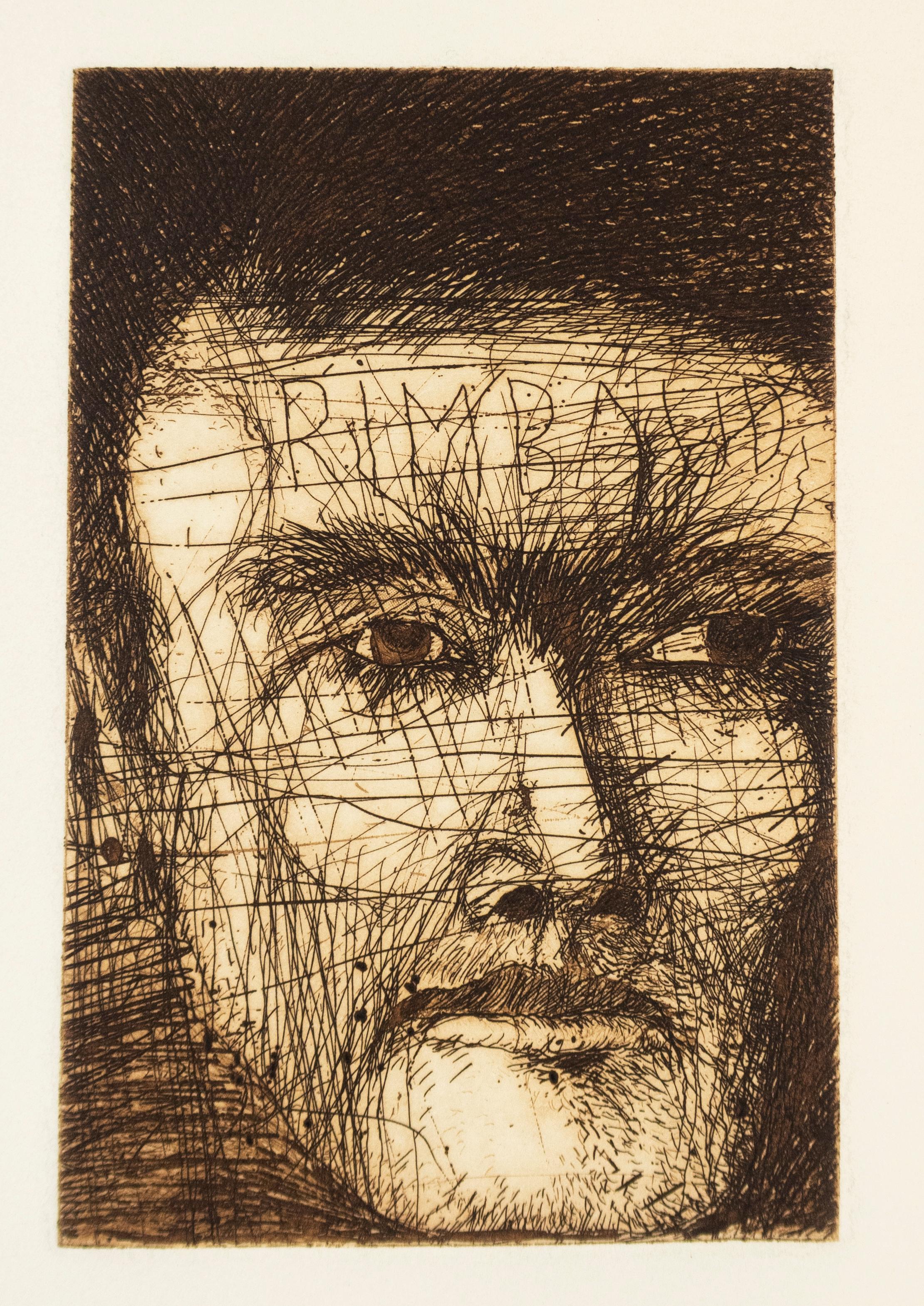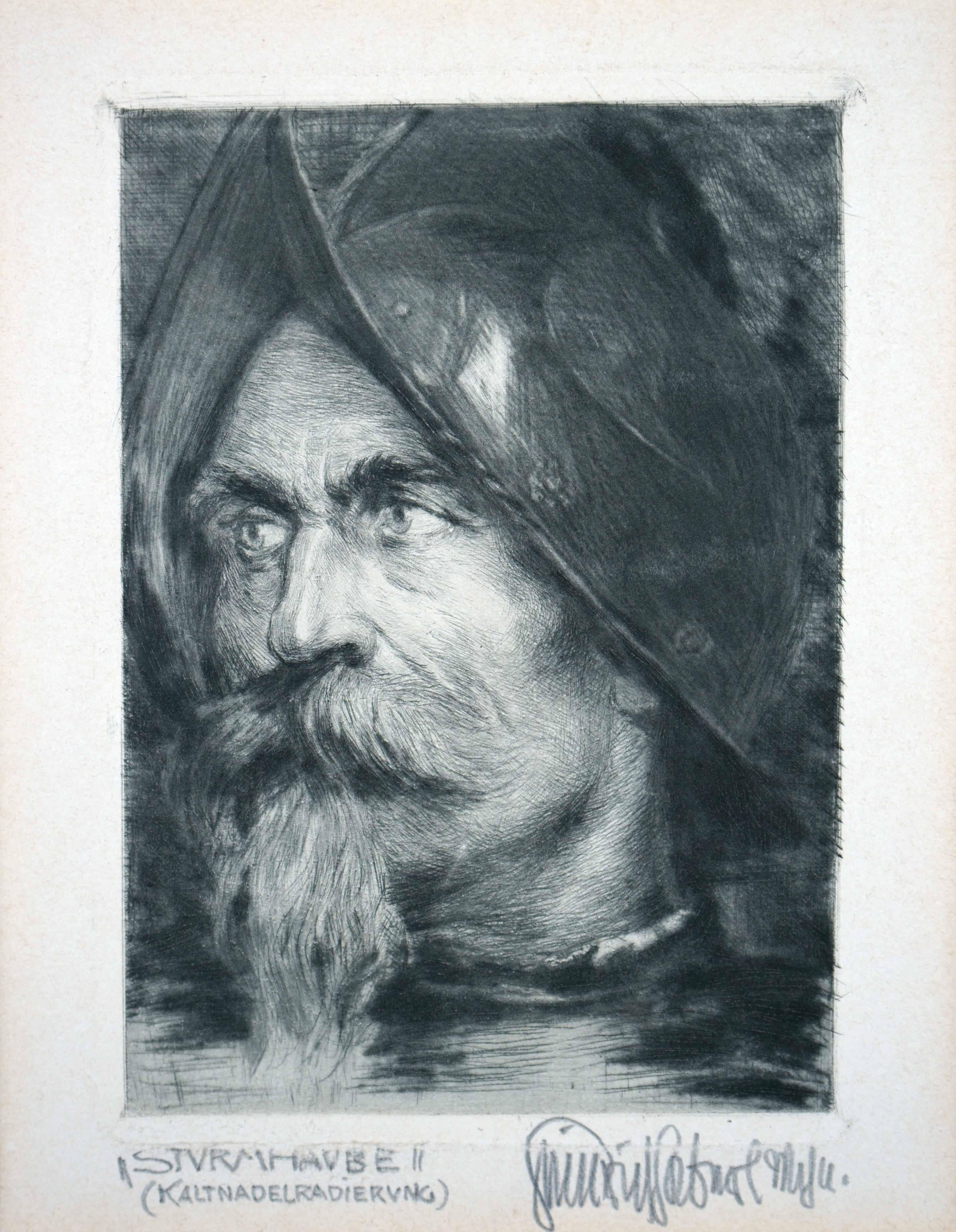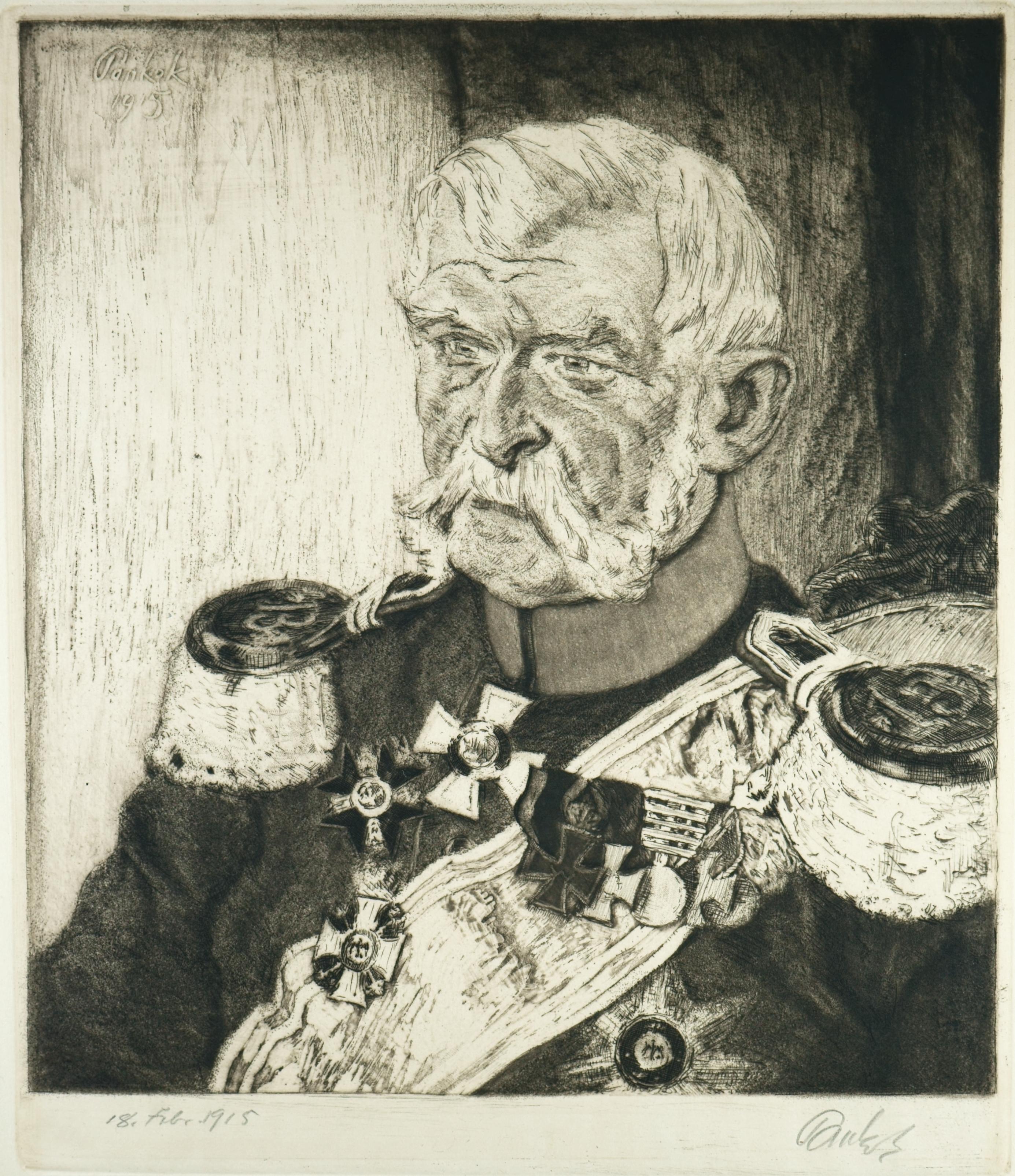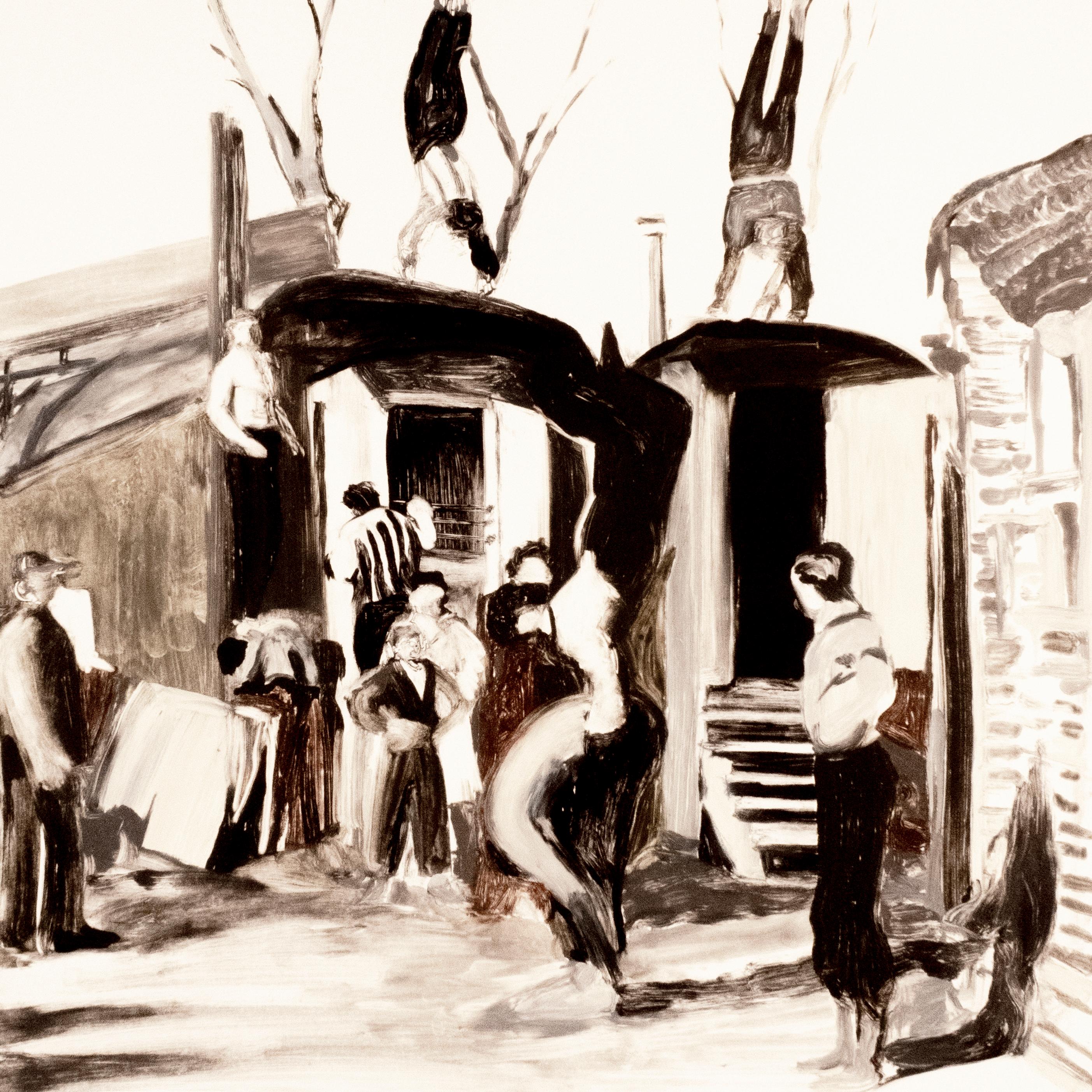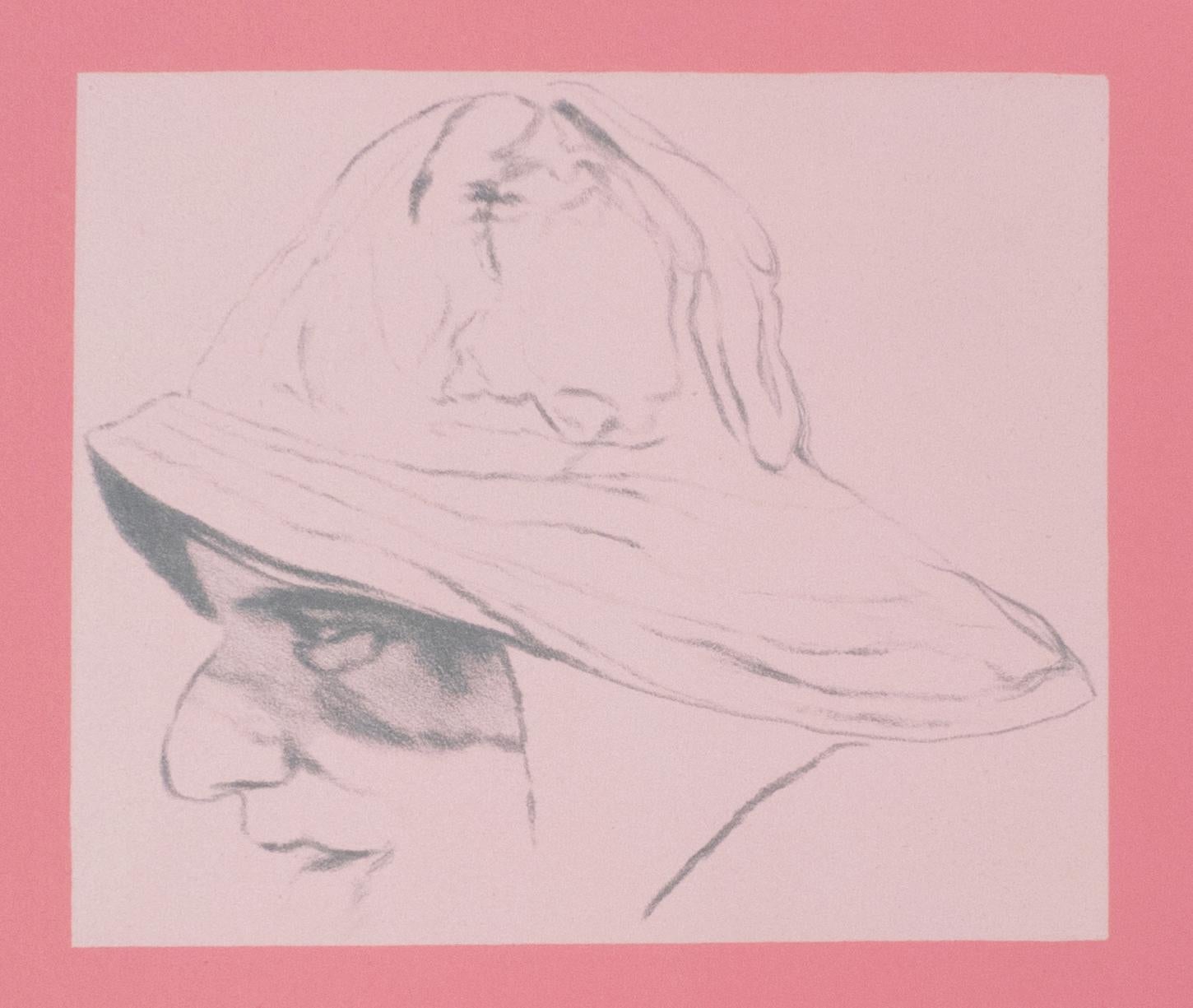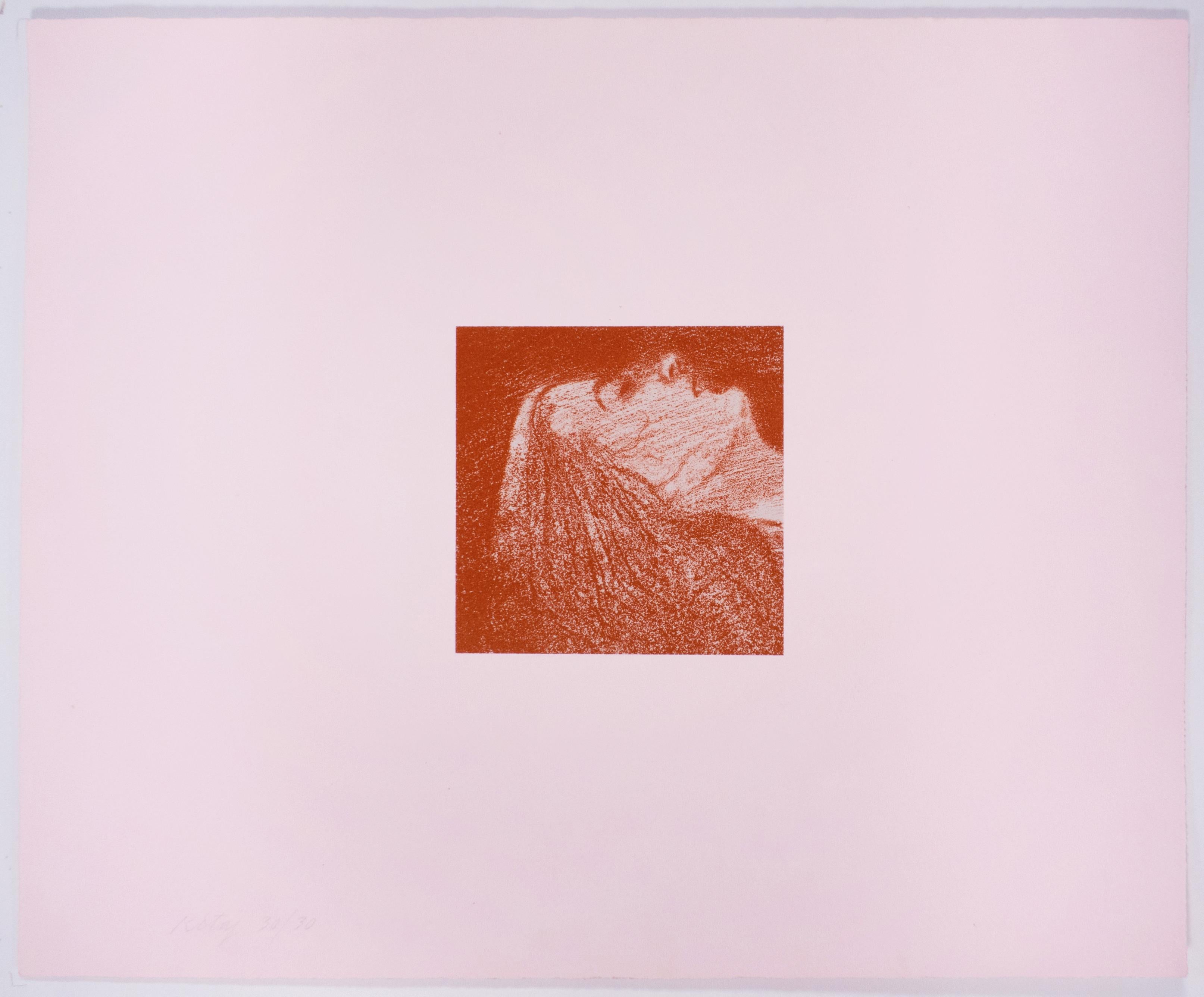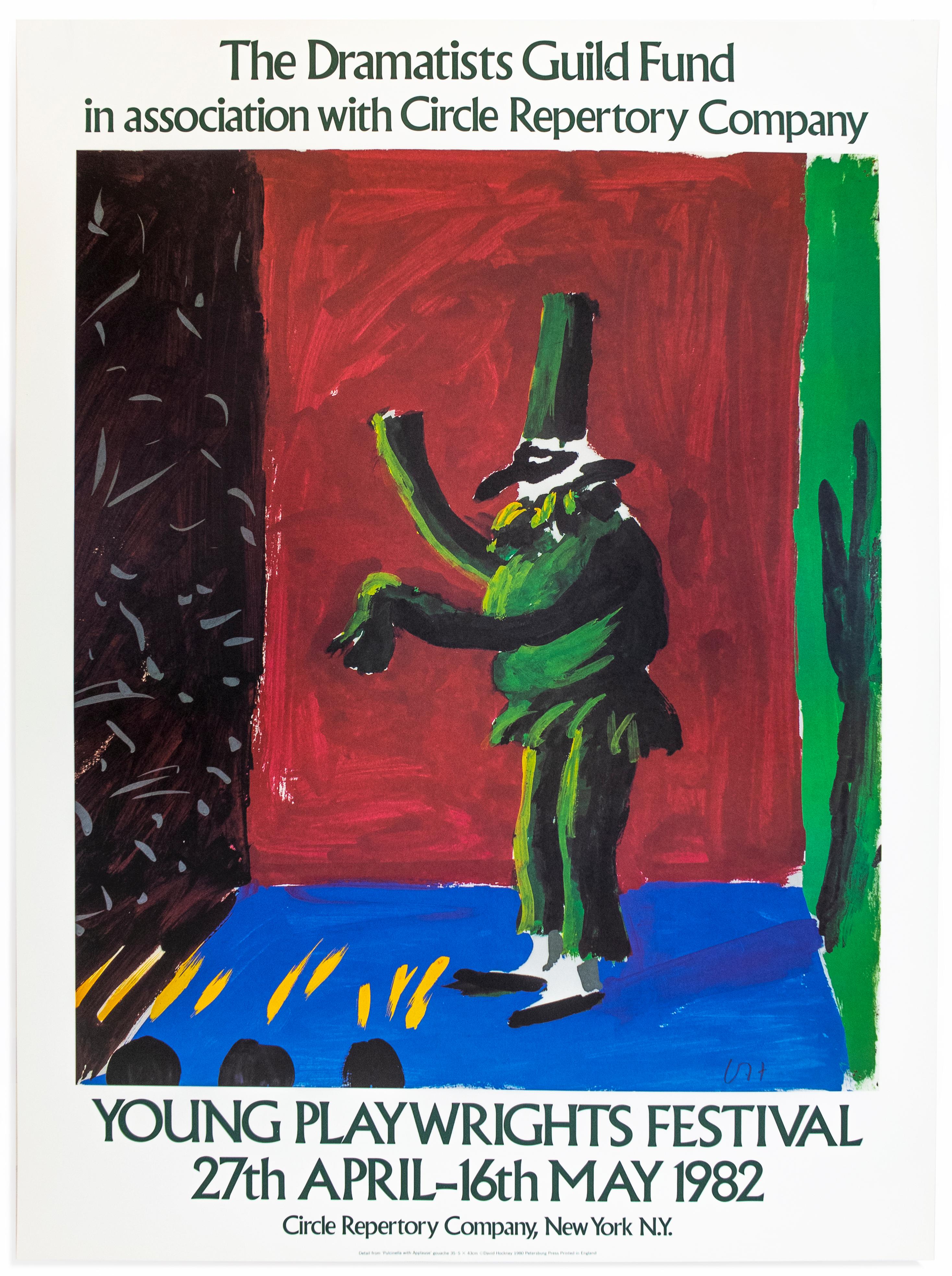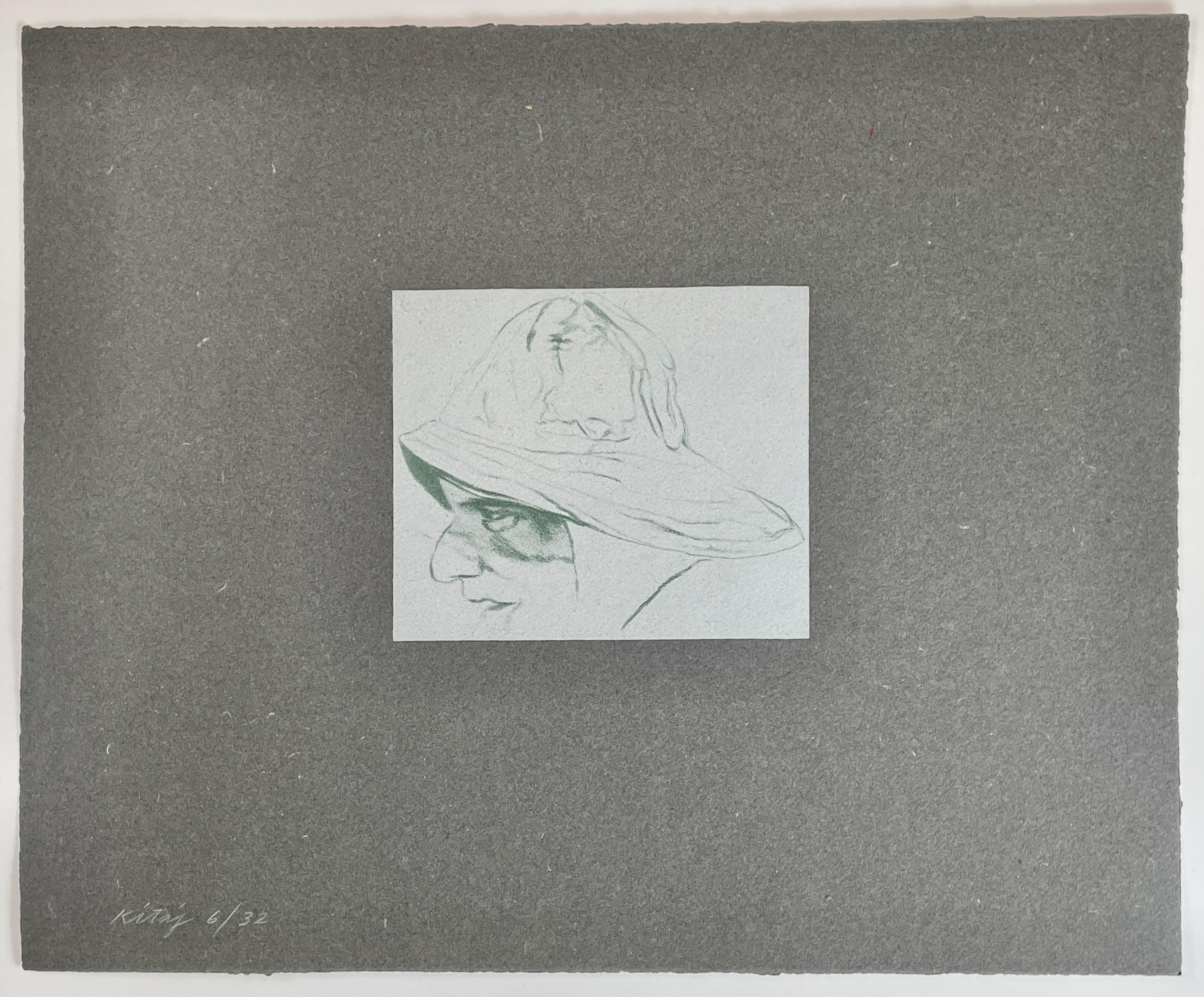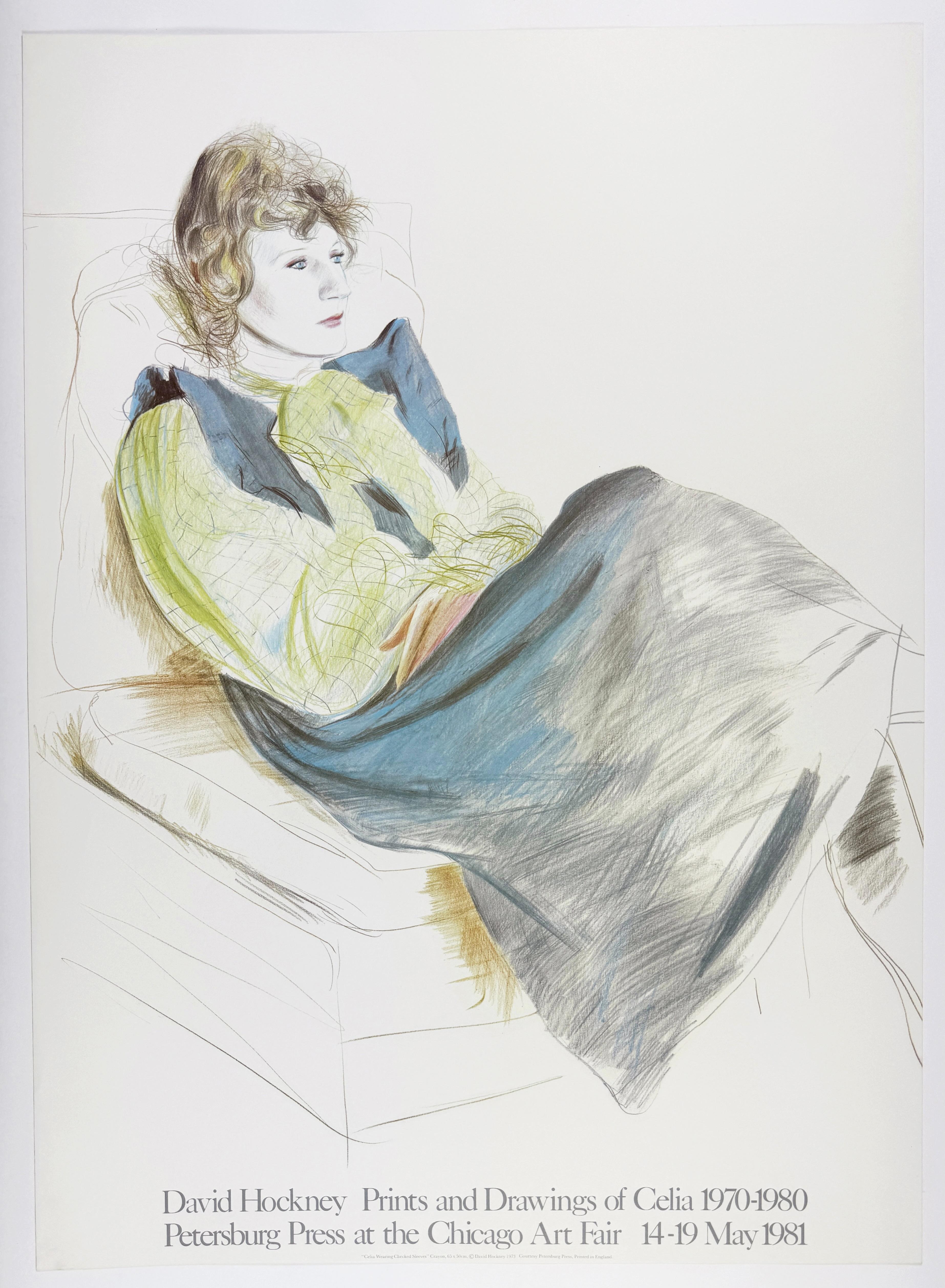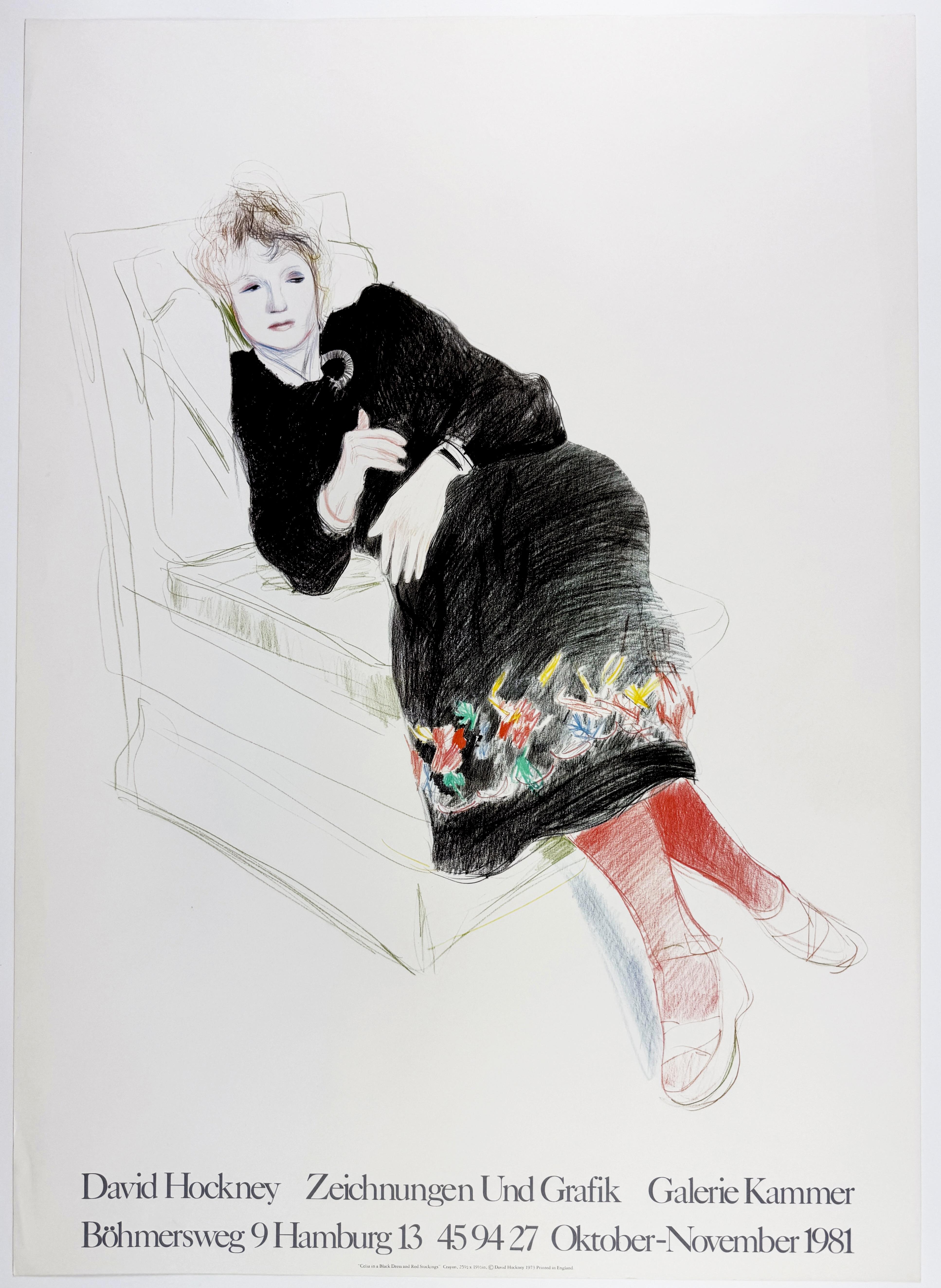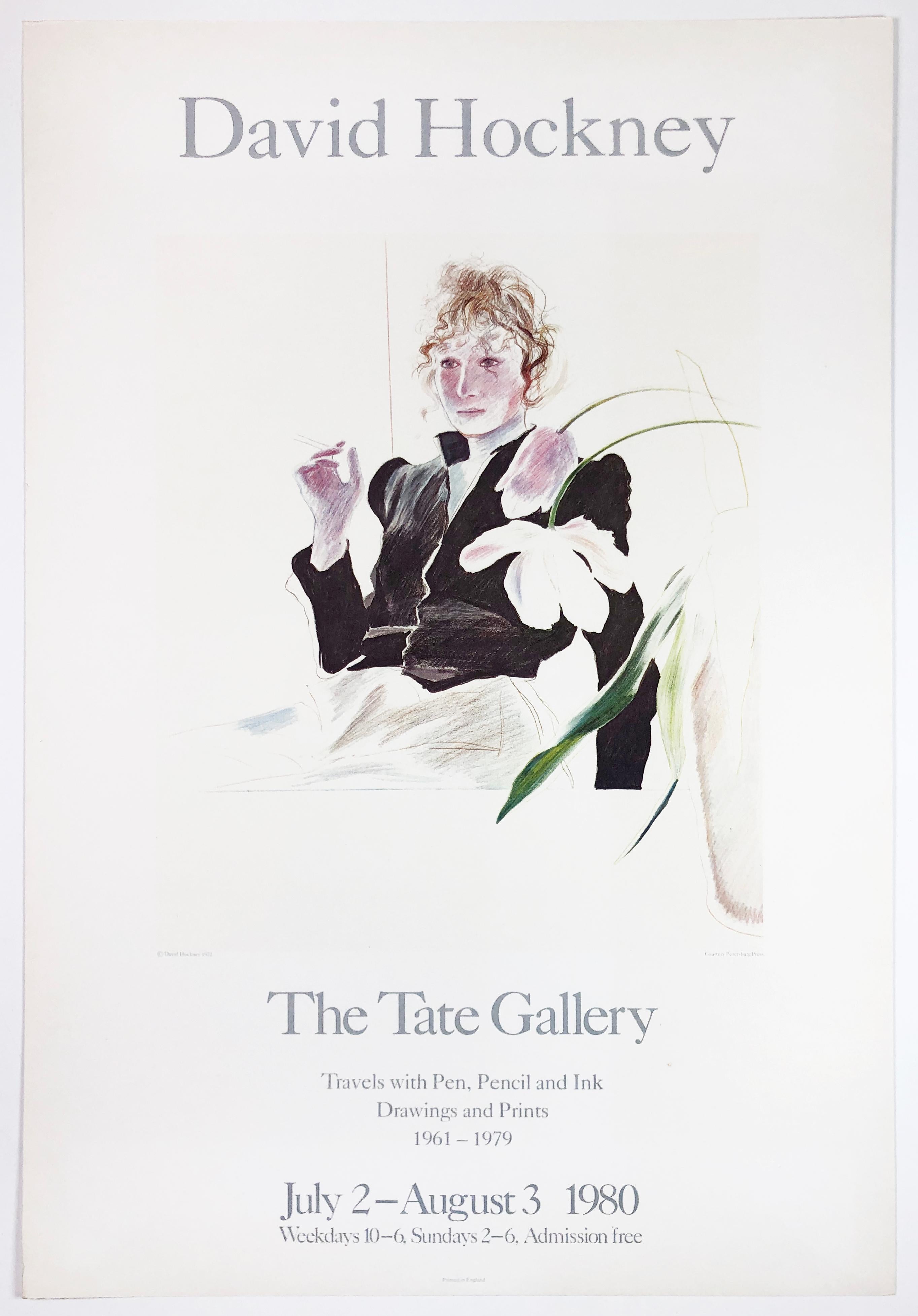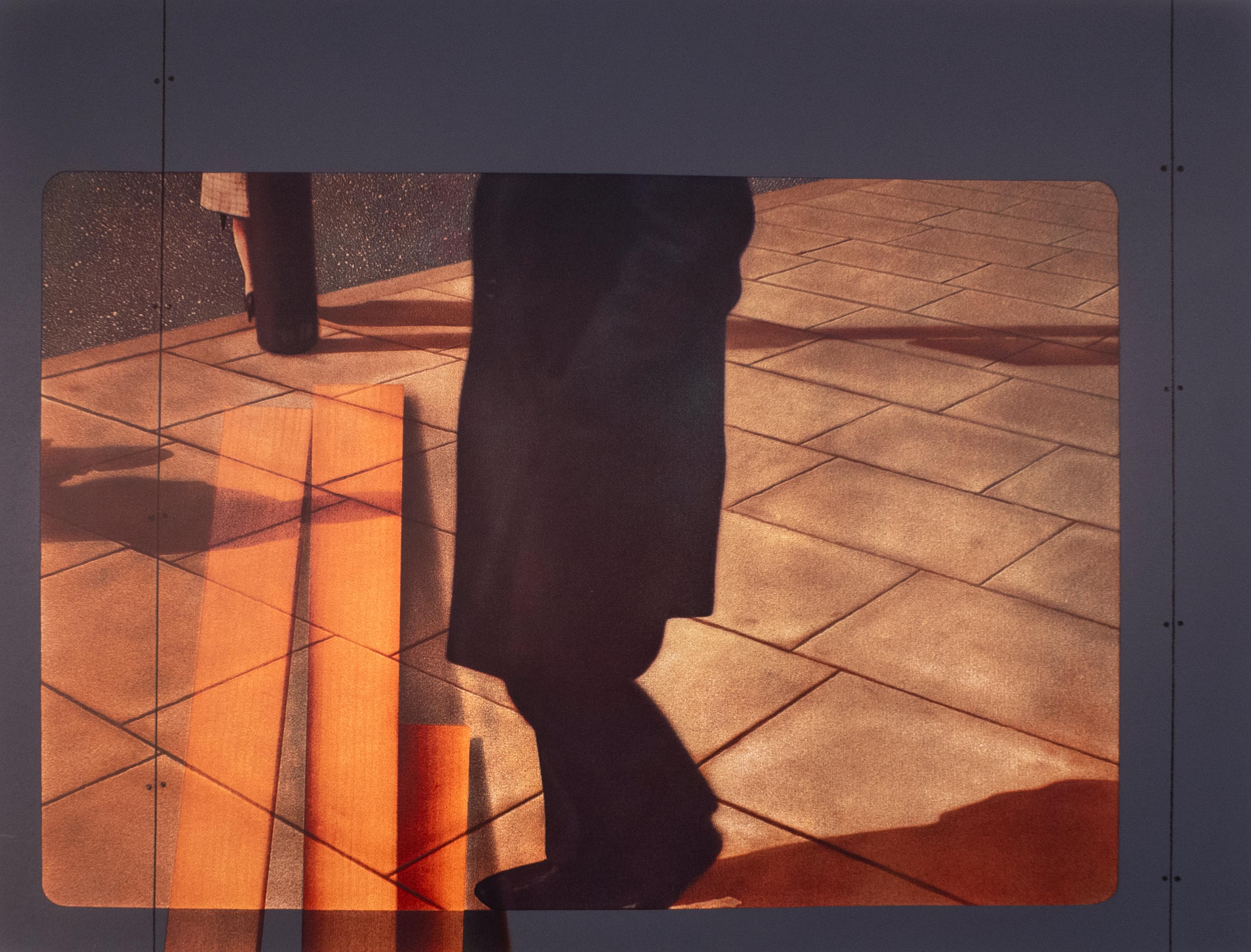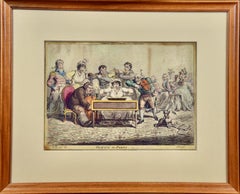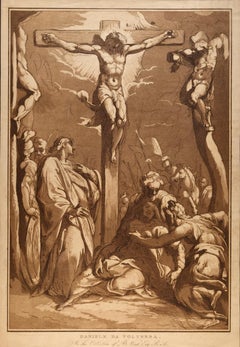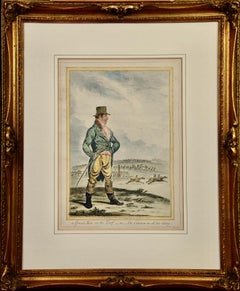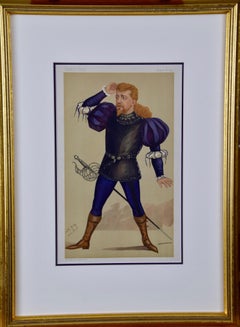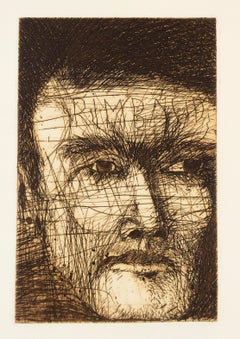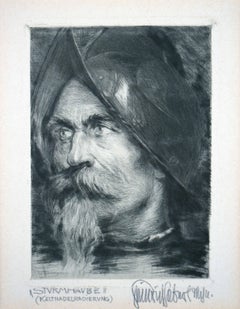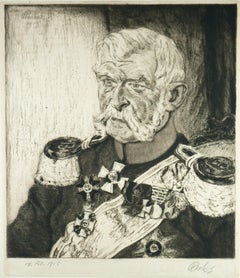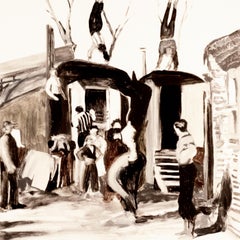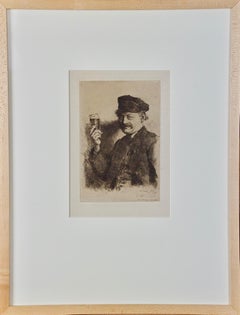
19th Century Etching Der Trinker (The Drinker, Portrait of a Brewer) by Leibl
View Similar Items
Want more images or videos?
Request additional images or videos from the seller
1 of 10
Wilhelm Maria Hubertus Leibl19th Century Etching Der Trinker (The Drinker, Portrait of a Brewer) by Leibl1874
1874
Price:$395
$460List Price
About the Item
- Creator:Wilhelm Maria Hubertus Leibl (1844 - 1900)
- Creation Year:1874
- Dimensions:Height: 21.25 in (53.98 cm)Width: 16.25 in (41.28 cm)Depth: 1.25 in (3.18 cm)
- Medium:
- Movement & Style:
- Period:
- Condition:
- Gallery Location:Alamo, CA
- Reference Number:Seller: # 34931stDibs: LU117325598232
About the Seller
5.0
Platinum Seller
Premium sellers with a 4.7+ rating and 24-hour response times
Established in 2011
1stDibs seller since 2019
285 sales on 1stDibs
Typical response time: 2 hours
Authenticity Guarantee
In the unlikely event there’s an issue with an item’s authenticity, contact us within 1 year for a full refund. DetailsMoney-Back Guarantee
If your item is not as described, is damaged in transit, or does not arrive, contact us within 7 days for a full refund. Details24-Hour Cancellation
You have a 24-hour grace period in which to reconsider your purchase, with no questions asked.Vetted Professional Sellers
Our world-class sellers must adhere to strict standards for service and quality, maintaining the integrity of our listings.Price-Match Guarantee
If you find that a seller listed the same item for a lower price elsewhere, we’ll match it.Trusted Global Delivery
Our best-in-class carrier network provides specialized shipping options worldwide, including custom delivery.More From This Seller
View All"Playing in Parts": A 19th Century James Gillray Hand-colored Musical Caricature
By James Gillray
Located in Alamo, CA
This hand-colored etching and aquatint caricature entitled "Playing in Parts" by James Gillray was published in London by Hanna Humphrey, 27 St. James Street on May 15th 1801. The print is signed in the plate in the lower right. This is a rare musical caricature. It depicts five amateur musicians, a woman and four men, performing their music in a drawing room. A young overweight woman dressed in white is seated in the center, playing a piano...
Category
Early 19th Century Portrait Prints
Materials
Etching
Crucifixion: 18th Century Etching by Conrad Metz after Daniele da Volterra
Located in Alamo, CA
"Crucifixion" is an etching and aquatint, printed in brown ink by Conrad M. Metz after a painting by Daniele da Volterra. It was published in London in 1789 in 'Imitations Of Ancient...
Category
Late 18th Century Old Masters Figurative Prints
Materials
Etching, Aquatint
"A Great Man on The Turf": A 19th Century James Gillray Hand-colored Etching
By James Gillray
Located in Alamo, CA
This framed hand-colored etching and aquatint entitled "A Great Man on The Turf or Sir Solomon in all his Glory" by James Gillray was published in London by Hanna Humphrey, 27 St. James Street on July 7th 1803. The print is signed in the plate in the lower right. It depicts a man, possibly a caricature of the racehorse breeder Sir Solomon. However, there has been some controversy about the identity of the central figure on the mound. Traditionally the man has been thought to represent John Russell, 6th Duke of Bedford...
Category
Early 1800s Portrait Prints
Materials
Etching
Hand Colored 19th c. Vanity Fair Caricature of an Opera Singer, "Polish Tenor"
By Sir Leslie Ward
Located in Alamo, CA
A hand colored Vanity Fair caricature of a 19th century opera singer, M Jean de Reszke, entitled 'Polish Tenor'. The print was created by the most famou...
Category
1890s Victorian Portrait Prints
Materials
Lithograph
A Pair of 19th C. Engravings Depicting the Costumes and Weapons of Afghani Men
Located in Alamo, CA
These hand-colored lithographs are from "Character and Costumes of Afghanistan", written by Lockyer Willis Hart (of the 22nd Bombay Native Infantry). The lithographs were created by ...
Category
1840s Realist Portrait Prints
Materials
Lithograph
18th Century Engraved Portrait of George Savile, Marquis of Halifax by Houbraken
By Jacobus Houbraken 1
Located in Alamo, CA
A superb 18th century engraved portrait of George Savile, Marquis of Halifax, Plate 82 in "The Heads of Illustrious Persons of Great Britain", written by...
Category
Mid-18th Century Realist Portrait Prints
Materials
Laid Paper, Engraving
You May Also Like
Jim Dine Rimbaud, the Coffee Exporter poet portrait drawing in earth tone sepia
By Jim Dine
Located in New York, NY
Jim Dine has expertly sketched the accomplished French poet and coffee trader Arthur Rimbaud. A vignette of dark brown surrounds his thin, fine features, which are defined with a flu...
Category
1970s Realist Portrait Prints
Materials
Etching
Balaclava - The target in sight -
Located in Berlin, DE
Heinrich Haberl (1869 Passau to 1934 Munich), Sturmhaube, c. 1900. drypoint, 14 x 10 cm (platemark), 28 x 21 cm (sheet size), 39 x 29 cm (passe-partout), titled "Sturmhaube" in lead at lower left and inscribed "Kaltnadelradierung", signed and locally inscribed "Heinrich Haberl Mchn. [Munich]" at lower right, inscribed again in lead on verso and with old collection stamp.
- slightly darkened, fixed and mounted
- The target in sight -
About the artwork
The theatrical "role-portrait" is to be seen against the background of the Rembrandt cult, which reached its climax at the end of the 19th century. The soldier seems to have stepped straight out of Rembrandt's Night Watch (1642) to fix something outside the picture with an alert and ready gaze. The steeply rising brim of the morion frames the gaze and thus perspectivises it as the actual 'pictorial action'. The gaze represents both the vigilant defence and the visionary goal of the battle.
Not only the subject, but also the style of the etching needle reflect Rembrandt's understanding of the times. Strong contrasts of light and dark are created in a virtuoso free stroke, without losing the effect of the reflections on the helmet and in the eyes. This shows a kinship with the early prints of Lovis Corinth, who also saw himself as an artist in the role of the knight. Against this background, Haberl's picture can also be seen as a representation of his artistic self-image.
About the artist
Heinrich Haberl first attended the art school in Nuremberg and from 1892 studied at the Munich Academy. There he was a master student of Johann Leonhard von Raab, Rudolf von Seitz, Franz von Defregger...
Category
Early 19th Century Realist Figurative Prints
Materials
Etching
$231 Sale Price
20% Off
General Wilhelm von Blume - Visionary retrospective -
Located in Berlin, DE
Bernhard Pankok (1872 Münster - 1943 Baierbrunn), General Wilhelm von Blume, 1915, aquatint etching, 34 x 29.5 cm (sheet size), 26 x 22 cm (plate size), signed in the plate at upper left, in pencil at lower right and dated in pencil at lower left.
- At lower left old collection stamp, at the right broad margin with a small spot, otherwise very good condition.
About the artwork
The 1915 aquatint etching of General Wilhelm von Blume is based on a 1912 oil painting in the LWL-Museum für Kunst und Kultur in Münster. A second oil portrait of the general by Pankok is in the Staatsgalerie Stuttgart. When Pankok painted the first oil portrait in 1912, the general had already been retired for 16 years. It is therefore a retrospective portrait. Accordingly, the orientation of his head is such that he is looking back in both the oil painting and the etching. Without fixing on anything in particular, he looks thoughtfully inwards and reflects on his life. Uniformed and highly endowed, it is his military activities in particular that he is reviewing attentively and, as his gaze reveals, quite critically.
Pankok has literally written the sum of his experiences on Wilhelm von Blume's face: The physiognomy is a veritable landscape of folds, furrows, ridges and gullies, all the more striking against the flat background. It is clear that each of the medals was also won through suffering. However, by breaking the boundaries of the picture, his bust appears as an unshakable massif, which gives the general a stoic quality.
The fact that the design of the portrait was important to Pankok can be seen from the different versions, the present sheet being the third and probably final revision, which Pankok dates precisely to 18 February 1915. Compared with the previous state, the light background now has a dark area against which the sitter's face stands out, the dark background in turn combining with the uniform to create a new tension in the picture.
Pankok's taking up of the portrait of the high-ranking military veteran and its graphic reproduction can also be seen in relation to the First World War, which had broken out in the meantime. In the face of modern weapons of mass destruction, Wilhelm von Blume's warfare and military writings were relics of a bygone, more value-oriented era.
About the artist
After studying at the Düsseldorf Art Academy from 1889 to 1891 under Heinrich Lauenstein, Adolf Schill, Hugo Crola, and Peter Janssen the Elder, Bernhard Pankok went to Munich in 1892, where he worked primarily as a graphic artist for the two major Jugendstil magazines "Pan" and "Jugend," which established his artistic success. Through this work he met Emil Orlik, with whom he had a lifelong friendship.
In 1897, he exhibited his first furniture, and in 1898, together with Richard Riemerschmid, Bruno Paul and Hermann Obrist...
Category
1910s Realist Portrait Prints
Materials
Etching
$462 Sale Price
20% Off
Acrobats, Michele Zalopany. Black and white monotype painting landscape
By Michele Zalopany
Located in New York, NY
In this black and white monotype, Zalopany has captured a duo of tumblers atop a roof, as onlookers stare in wonder. The artist is able to cap...
Category
1980s Realist Figurative Prints
Materials
Monotype
Cap'n A.B. Dick (B) Pale pink and raspberry sailor's portrait drawing R.B. Kitaj
By R.B. Kitaj
Located in New York, NY
Kitaj’s drawing on pink paper is of a man in profile, wearing a sou’wester: a fisherman’s collapsible rain hat. The image is a wry portrait, ostensibly of Albert Blake...
Category
1970s Realist Figurative Prints
Materials
Lithograph
R.B. Kitaj Orgasm: drawing of woman in ecstasy with pale pink and clay red
By Ronald Brooks Kitaj
Located in New York, NY
Printed in a rich terra cotta red on pale pink paper, Orgasm depicts a woman’s head in profile with a dark background. Kitaj was fascinated with the female form, often producing edgy...
Category
Late 20th Century Realist Portrait Prints
Materials
Lithograph
